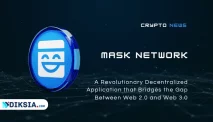Yakovenko then teamed up with Gokal and other engineers to form Solana Labs, a company dedicated to building the Solana protocol and ecosystem. They raised seed funding from various investors, including Multicoin Capital, Foundation Capital, Slow Ventures, and more. They also launched a testnet in 2018 and invited developers and validators to join and test the network.
In 2019, Solana Labs conducted a private token sale, raising $20 million USD from investors such as Blocktower Capital, NGC Ventures, Passport Capital, and more. They also launched a public testnet and achieved over 50,000 transactions per second with over 200 nodes.
In 2020, Solana Labs conducted a public token sale on CoinList, raising $1.76 million USD from over 4,000 participants. They also launched the mainnet beta version of Solana in March 2020, marking the official launch of the network. They also partnered with various projects and platforms to integrate with Solana, such as Chainlink, Circle, Serum, Terra, Audius, FTX, and more.
In 2021, Solana Labs raised another $314 million USD in a private token sale led by Andreessen Horowitz and Polychain Capital. They also launched various initiatives and programs to support the growth and development of the Solana ecosystem, such as the Solana Season Hackathon, the Ignition Hackathon, the Breakpoint Conference, the Solana Foundation Grants Program, and more.
What is the development roadmap for Solana?
Solana has an ambitious development roadmap that aims to improve its network performance, security, usability, and adoption. Some of the main goals and milestones on its roadmap are:
- Launching Wormhole 2.0, which will enable trustless and decentralized cross-chain transfers of tokens and data between Solana and other blockchains such as Ethereum, Binance Smart Chain, Terra, Polygon, and more.
- Launching Optimistic Rollups (ORUs), which will allow developers to run scalable smart contracts on Solana using Ethereum-compatible tools and languages such as Solidity.
- Launching Starlight Network (SLN), which will provide a layer-2 scaling solution for Solana using state channels. This will enable instant and low-cost transactions for high-frequency use cases such as gaming, micropayments, streaming, etc.
- Launching Validator Identity Program (VIP), which will allow validators to register their identities on the blockchain using verifiable credentials.
- Launching Solana Program Library (SPL), which will provide a standard set of smart contracts and libraries for common functionalities such as token standards, governance, lending, borrowing, staking, etc.
- Launching Solana Name Service (SNS), which will allow users to register human-readable names for their accounts and contracts on the blockchain.
- Launching Solana Improvement Proposals (SIPs), which will allow the community to propose and vote on changes and upgrades to the Solana protocol and ecosystem.
Who are the key people behind Solana?
Some of the key people behind Solana are:
- Anatoly Yakovenko: The co-founder and CEO of Solana Labs. He is responsible for the vision and direction of the project. He is also the creator of PoH and the main architect of the Solana protocol.
- Raj Gokal: The co-founder and COO of Solana Labs. He is responsible for the business operations and strategy of the project. He is also involved in community building, partnerships, and fundraising.
- Eric Williams: The co-founder and CTO of Solana Labs. He is responsible for the technical development and innovation of the project. He is also an expert in distributed systems, cryptography, and network engineering.
- Greg Fitzgerald: The co-founder and CIO of Solana Labs. He is responsible for the research and education of the project. He is also a leading developer and contributor to the Solana codebase.
- Stephen Akridge: The co-founder and VP of Engineering of Solana Labs. He is responsible for the engineering team and the quality of the code. He is also a skilled programmer and problem solver.
Solana Technology
What is the underlying technology of Solana?
The underlying technology of Solana is a combination of PoH, PoS, and other innovations that enable it to achieve high performance, security, and scalability. Some of these technologies are:
- Proof-of-History: A cryptographic clock that timestamps transactions before they are validated by the PoS consensus. This allows Solana to achieve high throughput and low latency without relying on a centralized authority or coordinator.
- Proof-of-Stake: A mechanism that secures the network by requiring validators to stake SOL tokens as collateral. Validators earn rewards for producing blocks and validating transactions, while losing their stake if they act maliciously or go offline.
- Sealevel: A parallel smart contract engine that enables multiple smart contracts to run simultaneously on different hardware threads without interfering with each other. This maximizes the utilization of the network’s computational resources and improves scalability.
- Turbine: A block propagation protocol that breaks down large blocks into smaller packets and distributes them across the network in a peer-to-peer fashion. This reduces bandwidth requirements and latency for validators and nodes.
- Gulf Stream: A mempool-less transaction forwarding protocol that allows validators to cache and stream transactions to the edge of the network, where they are executed before the next block is produced. This eliminates the need for mempools, which are often a source of congestion and high fees on other networks.
- Cloudbreak: A horizontally scalable data structure that organizes accounts and contracts into columns and rows, allowing for fast and concurrent reads and writes. This enhances the performance and capacity of the state storage.
- Archivers: A network of nodes that store historical data of the blockchain and provide proofs of its validity. This enables Solana to offload data from validators and nodes, reducing their storage and memory requirements.
How does Solana work?
Solana works by using PoH as a source of truth and PoS as a source of security for its network. PoH acts as a cryptographic clock that timestamps transactions before they are ordered and validated by PoS. PoH also enables parallel processing, pipelining, compression, and other techniques that improve the efficiency and speed of the network.






